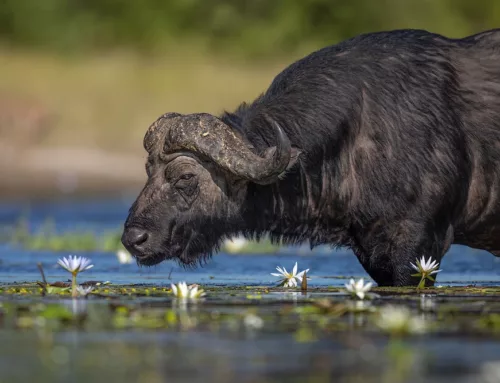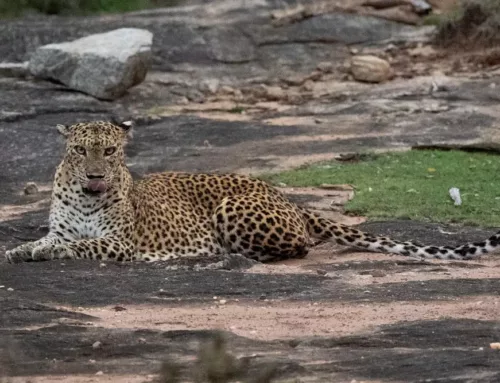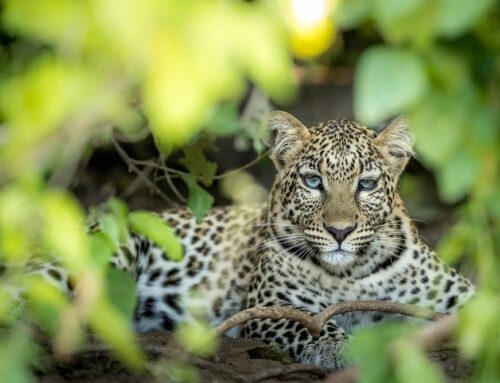Mana Pools National Park
Mana Pools National Park

An elephant stretching in front of the mighty Zambezi © William Steel
Quick links
Mana Pools National Park • Getting to Mana Pools • Topography and landscape • Why visit Mana Pools
Mammals of Mana Pools • Birdlife in Mana Pools • Camera equipment • Activities • Where to stay
For photographers seeking breathtaking landscapes and awe-inspiring wildlife encounters, Mana Pools National Park stands as an unforgettable destination, due to the high concentration of wildlife present. Nestled in the heart of Zimbabwe along the mighty Zambezi River, this UNESCO World Heritage site offers a diverse range of subjects for photographers.
When thinking of Mana, your mind inevitably flashes to iconic shots of big bull elephants reaching for the treetops, pulling down Kigelia fruits or branches of the abundant acacia albidas in front of the blue haze of the Zambezi. However, Mana National Park in Southern Africa offers much more than just those iconic shots. In this blog, and in the video below we’ll share everything you need to know about a Mana Pools photo safari.
While on a photographic safari here, you will have incredible encounters with wildlife, discover creative opportunities for capturing images at every turn, and fall in love with the landscape that surpasses your imagination.
Photographic opportunities include photographing wildlife across the incredible floodplains, getting down low with African Wild Dogs, framing beautiful eland between the trees, and not to mention, photographing lions against the backdrop of iconic forests. As mentioned earlier, the park is known for its elephant population of over 12,000.
Therefore, while on safari in Mana Pools, you may be able to get some incredible photographs of them walking through the forest, either reaching for branches or in the floodplains of the Zambezi.
The true gem of Mana Pools lies in its unique offering that sets it apart from other wildlife destinations – the ability to explore the park on foot. This exceptional feature is a massive bonus for photography enthusiasts, as it allows you to intimately connect with nature and capture breathtaking moments up close.

An impala in the iconic mana wilderness © William Steel
The sheer magic of being able to walk amidst the park’s stunning landscapes and encounter wildlife in their natural habitat creates an unparalleled experience for photographers, making this park a haven of photographic wonder.

Walking the through broad expanse of the park we found a small hyena den which was an incredible experience on foot. © William Steel
Mana Pools can be accessed through various airports and airstrips, depending on your starting point. The closest major international airports are Harare International Airport, located approximately 370 kilometres away from the park, and Victoria Falls Airport, located approximately 350 kilometres away.
Chartered flights are the most popular and recommended. From there, visitors can either choose to fly to Mana Pools airstrip, which is the nearest airstrip to the park, or opt for a road journey.

The landing strip for Mana Pools © William Steel
The road conditions leading to Mana Pools National Park can vary depending on the route taken. The most common route is via Harare and then proceeding towards Karoi. The road is generally paved and well-maintained up until Karoi. From Karoi onwards, the road becomes a gravel road that may require extra caution and slower speeds, especially during the rainy season. It is advisable to have a suitable vehicle for off-road conditions if travelling by road.

Elephant reaching for sausage tree fruit © William Steel
For those who prefer flying, charter flights are available from Harare to Mana airstrip, offering a scenic and convenient option. The airstrip is situated within the park, providing easy access to the lodges and campsites.
Mana Pools National Park is located in northern Zimbabwe, along the southern banks of the Zambezi River. It is renowned for its spectacular and diverse ecosystems, making it a popular destination for wildlife and nature photographers.

Nyala are not often spotted in Zimbabwe parks so it was a special sight on our walking safari © William Steel
The park has a diverse range of terrain, including floodplains, woodlands, and mopane forests. One of its most iconic features is the riverine landscape. The Zambezi River flows through the park, creating a unique environment where animals and plants coexist in close proximity to the water source. Scenic riverbanks offer stunning panoramic views of the surrounding landscapes.

Mana is known wildlife conservation area for both wild dog and elephants © William Steel
The varied topography of the park includes both flat plains and rugged hills. The park is dominated by the Mana Pools area, which is a flat stretch of vegetation-rich floodplain. This area is known for its towering mahogany and acacia trees, which provide shade and sustenance for a wide range of wildlife species such as elephants, lions, and leopards.
The park experiences a subtropical climate with distinct dry and wet seasons. During the dry season, temperatures can soar, and the vegetation gradually dries up. However, the wet season brings relief in the form of refreshing rains, turning the park into a lush green paradise.

The river frontage creates a beautiful backdrop for the park © William Steel
Mana Pools National Park is home to a rich and diverse array of flora and fauna. The riverine ecosystem supports a plethora of animal life, including large elephant herds, hippos, crocodiles, and an abundance of bird species.

Walking along the Lower Zambezi Valley allows for a diversity of images © William Steel
The Zambezi River, with its numerous tributaries, acts as a lifeline for both wildlife and vegetation within the park. It serves as a watering hole for animals and provides a habitat for diverse aquatic life. Moreover, the river’s floodplains and deltas create dynamic ecosystems that support a rich variety of aquatic and terrestrial species.

A scenic spot for an elephant © William Steel
Mana Pools National Park has been designated as a UNESCO World Heritage Site and is protected as a national park. The conservation efforts in the area have been recognized globally, and sustainable practices are employed to preserve the natural beauty and biodiversity. Besides the national park status, there are also private concessions within the park, allowing for responsible tourism and resource management.

There are impressive concentrations of Eland in Mana © William Steel
The local communities living around the park, such as the Tonga, Shona, and Nyanga tribes, provide a unique cultural blend and have a rich cultural heritage and contribute to the rich atmosphere of the area.
The national park covers about 2,196 square kilometres, providing a vast and varied landscape. It encompasses the floodplain of the Zambezi River, woodlands, grasslands, and the four main pools after which it is named. The sheer size of the park allows for a diverse range of wildlife and natural ecosystems to thrive.

Elephant in Riverine Forest © William Steel
Overall, the vastness, ecological importance, and unique wildlife experiences sets Mana Pools apart, making it a coveted destination for wildlife photography enthusiasts looking for an authentic African experience.
Mana is famous for its large population of elephants, known for their impressive tusks and incredible size. Resident superstar, Boswell, is an elephant bull known for his antics of standing on his hind legs while plucking the most succulent pods from the trees. His circus elephant-like behaviour turned him into a YouTube star. But he’s not the only elephant that does this – guides talk of atleast five different males who have since adopted this behaviour.

A large bull elephant © William Steel
Other mammals include the Cape buffalo, hippopotamus, lions, African leopard, African wild dog, spotted hyena, zebra, and impala. When moving towards the water, photographers can get sightings of aquatic monsters such as hippopotamuss and the Nile crocodile.

Mana Pools lion © William Steel
Mana Pools National Park is known for its incredible population of eland. As they prefer open woodlands and savannas, the park’s habitat provides an ideal environment for them. Waterbuck is another species that thrive in the park.
Photographers will not find any wildebeest, rhino, or giraffe in the park. By the mid-90s the last of the black rhino were removed from the park, as poachers reduced their numbers significantly. Wildebeest and giraffes were simply not introduced into the ecosystem.

A hippo at Chisambuk pool © William Steel
Mana Pools is a great birding destination. The range of habitats includes woodland, escarpment cliffs and savannah. Waterbirds are well represented along the shore of the Zambezi River and the four pools. Southern carmine bee-eaters nest on the riverbanks in the dry months. African skimmer, Pel’s fishing owl, The purple-crested turaco, and Lilian’s lovebird are just some of the birding treats that you may encounter during your trip.

Lillian’s lovebirds © William Steel
The magnificent African Fish Eagle is a resident bird known for its distinctive call and powerful flying skills. It is often seen near water bodies, preying on fish. More resident birds include the Grey-headed kingfisher and the Lilac-breasted roller.
Migratory birds include the Southern carmine bee-eater, African skimmer, and Livingstone’s flycatcher and are present from November to April.

Carmine Bee-eaters © William Steel
Böhm’s spine tail is an endemic bird to the Zambezi Valley, including Mana Pools. It has a distinctive call and can be found in woodland areas, feeding on insects.
When packing your camera gear, it is important to keep in mind the 20kg luggage restriction that comes with flying on a chartered flight. Therefore, you must pack strategically.
It is recommended to have lenses ranging from 24mm to 500/600mm for optimal versatility. Since you will be doing a lot of walking, a longer lens is beneficial for zooming in and capturing distant wildlife. Pro tip: make sure to pack your camera straps so that you can easily sling one of your cameras around your neck while walking.

The reason the region attracts so many wildlife photographers is because of walking safaris © William Steel
You will also have the opportunity to get up close to subjects like large elephants, so having a wide-angle lens is essential. The stunning environment calls for lenses such as 70-200 or 100-400/100-500, as they provide the most aesthetically pleasing results. Additionally, using a GoPro or action camera can help capture the expansive shots and the thrilling experiences of walking, canoeing, and driving through the remarkable flood plains.

An elephant along the river terraces © William Steel
There are several activities that visitors can enjoy in and around Mana Pools National Park. Some of these activities include game drives which gives photographers the opportunity to see elephants, lions, buffalo, leopards, and a variety of antelope species.
Mana Pools is well-known for its canoeing experiences along the Zambezi River. It allows visitors to observe wildlife from the water, including hippos and crocodiles. Photographers have an extra advantage shooting wildlife frolicking in the water, or peacefully drinking alongside various species.

A lion with the iconic Mana pools haze © William Steel
Guided walking safaris give visitors the chance to explore the park on foot, enjoying a more intimate experience with nature while learning about the diverse plant and animal life. It’s important to note that these activities in Mana are usually guided by park rangers and experienced local guides, ensuring safety and environmental sustainability.

Elephants enjoying the Zambezi © William Steel
The park is a haven for birdwatchers, with over 400 bird species to be spotted. Photographers can spot various colourful and unique birds, including fish eagles, kingfishers, storks, and herons.

A visit to Mana Pools is not complete without a walking guide © William Steel
The park offers a range of accommodation options to suit different preferences and budgets. Visitors can choose from lodges, high-end tented camps, and camping facilities. The lodges provide comfortable and well-appointed rooms with amenities such as en-suite bathrooms, electricity, and dining areas, while tented camps offer a more adventurous experience with spacious tents equipped with beds, basic furnishings, and shared bathroom facilities.
For those who prefer a more rustic experience, there are camping sites available where visitors can pitch their own tents and enjoy the natural surroundings.

Sleep pack of Wild Dogs © William Steel
The lodges are strategically spread out across the park, each offering its unique scenery and ambiance. This allows visitors to choose a lodge that best suits their preferences and desired experience. From lodges nestled by the riverbanks to those situated amidst the lush greenery, there is a diverse range of landscapes to explore.
It is worth noting that some lodges may close during the rainy months. This is because the park’s terrain can become challenging to navigate and access during this time. However, there are still plenty of other lodges available that remain open year-round, ensuring that visitors can experience the park’s beauty and wildlife in all seasons.
Mana Pools, in conclusion
In conclusion, photographers should visit Mana Pools National Park due to its exceptional beauty and unique photography opportunities. The park’s diverse ecosystem offers an abundance of wildlife and breathtaking landscapes, making it a haven for any photographer looking to capture the wonders of nature.

Purple Crested Turaco © William Steel
From close encounters with elephants and lions to the exquisite colours of sunrise and sunset reflected in the Zambezi River, Mana provides endless possibilities for stunning photographs. Additionally, the park’s remote location and limited infrastructure contribute to its untouched charm, allowing photographers to create truly authentic images.

A male elephant stretching for branches in Mana © William Steel
So, whether you’re a professional photographer or an enthusiast, a visit to this incredible park should not be missed, as it promises an unforgettable experience and the chance to capture some of Africa’s most captivating moments.



Leave A Comment
You must be logged in to post a comment.